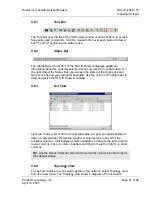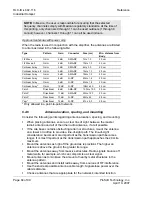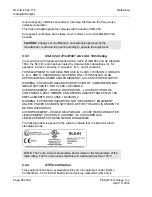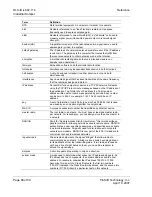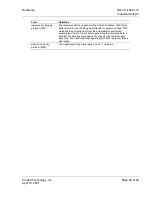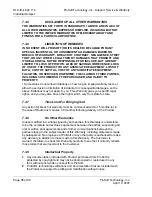
Reference RLX-IH
♦
802.11b
Industrial Hotspot
ProSoft Technology, Inc.
Page 81 of 99
April 10, 2007
antennas do not require a ground plane. Articulating antennas and non-
articulating antennas work in the same way. An articulating antenna bends at the
connection.
Collinear array antennas
A collinear array antenna is typically composed of several linear antennas
stacked on top of each other. The more stacked elements it has, the longer it is,
and the more gain it has. It is fed in on one end.
The antenna pattern is torroidal. Its azimuthal beam width is 360°
(omnidirectional). Its vertical beam width depends on the number of
elements/length, where more elements equal narrower beam width. The antenna
gain also depends on the number of elements/length, where more elements
produce higher gain. Typical gain is 5 to 10 dBi.
The antenna polarity is linear, or parallel to the length of the antenna.
Yagi array antennas
A yagi antenna is composed of an array of linear elements, each parallel to one
another and attached perpendicular to and along the length of a metal boom. The
feed is attached to only one of the elements. Elements on one side of the fed
element are longer and act as reflectors; elements on the other side are shorter
and act as directors. This causes the antenna pattern to radiate in a beam
pointed along the boom toward the end with the shorter elements. The pattern

